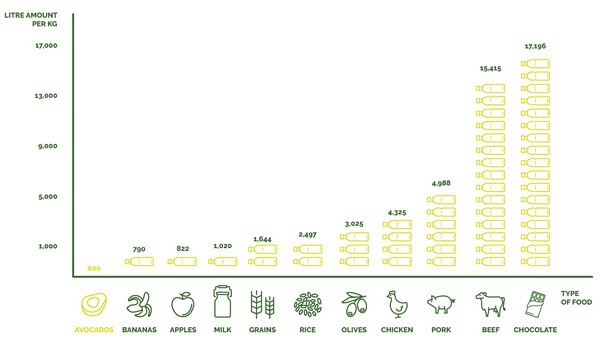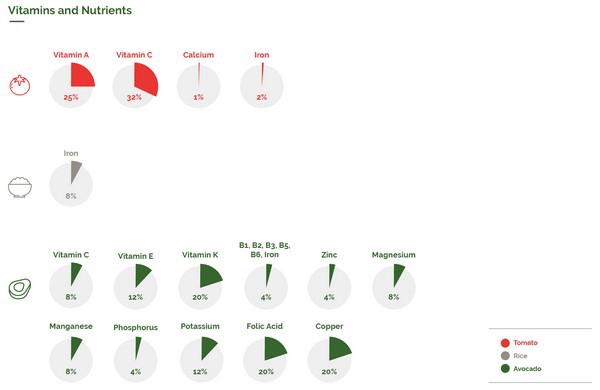The avocado has become the superfood of the twenty-first century. Technical improvements in the avocado harvest within recent years have allowed substantial reduction in its water footprint. Present in all types of diets, no other food offers the same nutritional value for the per-liter amount of water used in growth and harvest.
The water consumption involved in avocado production has been optimized in recent years. Currently, the amount of water necessary to produce one kilo of this superfood varies between 600 to 700 liters. Technical improvements in irrigation as well as careful plant-growth control have reduced this figure by between 300-400 liters within the last decade.

The current quantity of water may appear to be high, but compared to fruits such as bananas (790 liters) or apples (822 liters), the amount of water avocados require ranks lower than the average within the fruits and vegetable market. Concerning grains, rice requires 2,500 liters for every kilo produced. As for foods of animal origin, such as chicken and beef, the respective amount of water used reaches as far as 4,325- 15,415 liters, according to studies from the Institution of Mechanical Engineers (IME).
A look into the avocado harvest around the world
The avocado is a fruit that adapts to different climate zones throughout the entire world. In fact, a large proportion of the zones where it is grown, such as Colombia and Mexico, have high percentages of precipitation and do not require irrigation on plantations. The majority of commercial farms in South Africa use efficient irrigation systems, and in dry zones, farmers use unique techniques to water their crop. For example, Israeli farms use desalinated water, and Peruvian farms irrigate with meltwater from the Andes.
“The cultivation of avocado plantations has been made environmentally friendly thanks to the commitment to R&D made by the sector in recent years. Not only are natural water resources used, which can come from both rain and meltwater from the Andes in Peru, but also efficient irrigation techniques and careful plant-growth control at all stages of the fruit´s ripening have been used to provide the necessary amount of water at all times,” stated Xavier Equihua, CEO of WAO.

Avocados are as unique in nutrients as they are sustainable
For every 100 grams of avocado, the energy contribution is 167 kcal, 485 mg of potassium, 73.23 g of water, 52 mg of phosphorus, 29 mg of magnesium, 12 mg of calcium, in addition to vitamins A, C, E and K. Following the examples of fruits taken above, the banana or apple respectively has an energy contribution of 90 and 52 kcal.
If we take into account the tomato, the vegetable that needs the least amount of water for its production, the nutrients it provides are minimal compared to the avocado. Tomato production requires few water resources, but the energy contribution is not proportional.
For more information:
World Avocado Organization
Email: info@worldavocadoorganization.com
www.avocadofruitoflife.com
